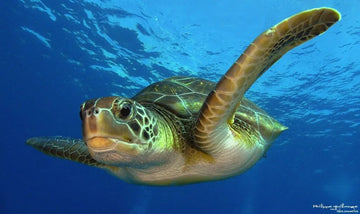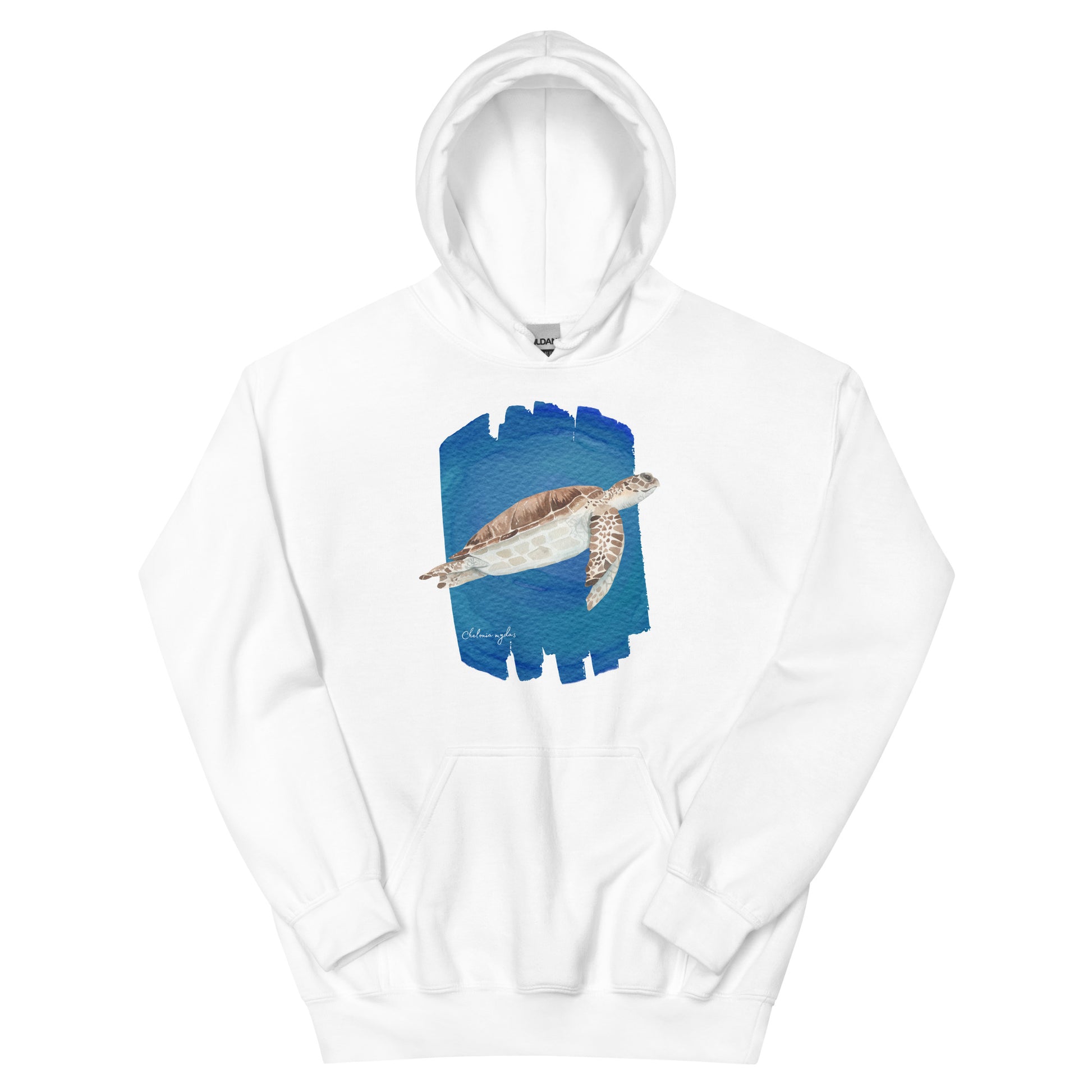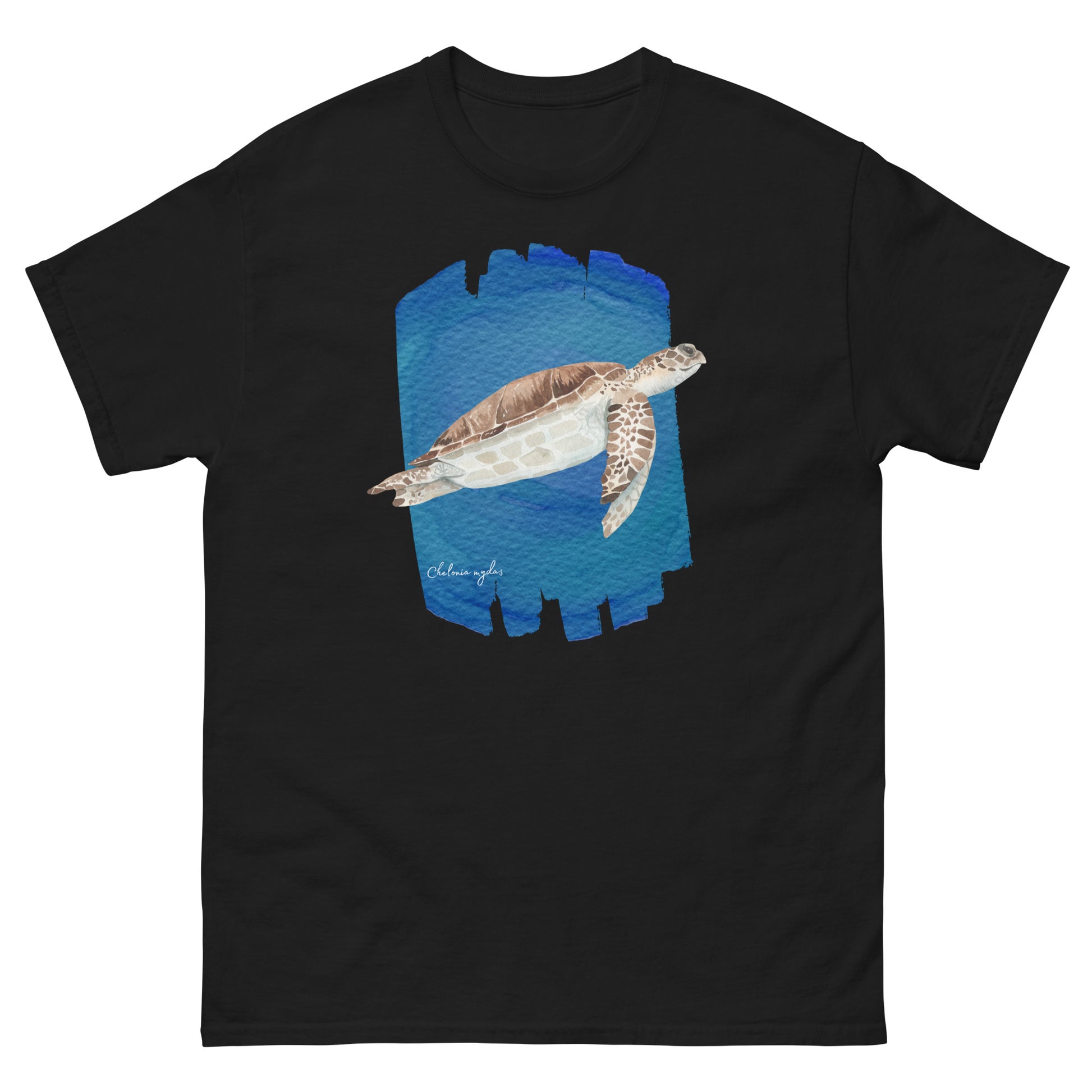The green sea turtle (Chelonia mydas) is a large turtle that inhabits tropical and subtropical coastal waters worldwide. Its name comes not from the color of the shell, which is brown or olive depending on its habitat, but by the greenish color of their skin and the fat secreted in the bottom of his shell.
Green sea turtles can reach a weight of up to 694 pounds, in fact the green turtle is among the largest of the sea turtles, but usually the maximum weight is around 440 pounds. Its head is proportionally small, non-retractable (cannot enter the shell) and extends from its heart-shaped carapace that measures up to 1.5 meters. Males are slightly larger than females and have a longer tail. Both have strong wing like fins which makes them powerful and elegant swimmers.

The green sea turtle carapace has five central shield flanked by four pairs of lateral shields
To distinguish the green turtle from other sea turtles one must look first to the top of the shell, composed of five central shields flanked by four lateral. The bottom has four pairs of shields. Second look at its nose, very short and no beak and with a strong bottom jaw with serrated and well defined teeth.
T-shirts and Hoodies for Turtle Lovers
SEE MORE TURTLE T-SHIRTS AND HOODIES
There are two types of green turtles: Atlantic green turtles that normally inhabit the coasts of Europe and North America, and the East Pacific green turtle, found in the Pacific coast from Alaska to Chile.
Unlike most sea turtles, adult green turtles are herbivorous and feed on sea grass and algae but juvenile green turtles also feed on invertebrates, jellyfish and sponges.
In contrast to most of the sea turtles that swim near the surface to heat up, the green turtle comes ashore to sunbathe and it is even possible to see them alongside with seals and albatrosses, being one of the few sea turtles that come out of the water not only in nesting times.
Sea turtles spend most of their lives, that can be as long as 80 years, submerged and breathe air after a single and explosive exhalation and a rapid inhalation. When green turtles are doing activities that require a high oxygen exchange they can be submerged four to five minutes and then rise to the surface to breathe for one to three seconds. If the activity does not requires much effort they can be submerged for up to 10 minutes.
Distribution and habitat
Green sea turtles, like other sea turtles, migrate long distances from feeding sites to nesting areas, usually on sandy beaches. To nest, females leave the sea and choose an area, often on the same beach used by their mothers, to lay eggs. After digging a hole in the sand with their flippers, they fill it with between 100 to 200 eggs and then plug that hole and head back out to sea. The eggs hatch after about two months. That is the most dangerous time in the life of a green turtle, when they travel from the nest to the sea. Several predators, including crabs and gulls, feed voraciously on the offspring during this short journey. Fortunately, a huge number of turtle eggs hatch at the same time, which enables the turtle population to remain stable.

The turtles spend most of their first five years of life in the open ocean. These young turtles are rarely seen because they are pelagic and swim in deep water. Green turtles migrate long distances between their feeding sites and the nesting areas, touring for more than 1,600 miles to reach their spawning grounds. The most important nesting sites can be found on several Caribbean islands, along the eastern coast of the continental United States, the eastern coast of South America, the Indian Ocean and on remote islands in the North Atlantic.
Green turtle threats
Green turtles are listed as a species in danger of extinction especially a subpopulation in the Mediterranean, listed as critically endangered. Despite this, green turtles are still captured for their meat and eggs and are also victims of boat helixes, drowned in fishing nets and even suffer the destruction of their nests by humans.
Besides human beings, only the largest sharks feed on adult green turtles, mainly tiger sharks (Galeocerdo cuvier) in the Pacific islands like Hawaii.























